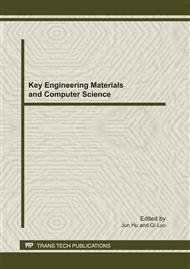p.20
p.26
p.33
p.38
p.45
p.52
p.58
p.64
p.69
A Study on Rotary Expanding Process of Large-Diameter Hot-Rolled Seamless Gas Cylinder with Finite Element Analysis
Abstract:
This paper expounds the application of rotary expanding process to manufacture the large-diameter hot-rolled seamless gas cylinder. 3D drawing software CATIA-V5 is applied to build 3d models of steel tube and rolling tools. Deformation feature of rotary expanding process is analyzed by using MSC.Marc FEA (finite element analysis) software to simulate the rolling process. As a result, it provides a scientific theory for optimizing the rotary expanding process and improving the quality of steel tube. It proposes a novel method to calculate the wall thickness uniformity after finite element analysis. Marc’s second development function and FORTRAN software’s extracting finite element node coordinates function are applied to calculate the wall thickness uniformity. The rotary expanding process can control the wall thickness uniformity well. The wall thickness uniformity of steel tube after rolling is simulated well by using MSC.Marc FEA software, which can help the technologist to predict the influence of wall thickness uniformity owing to the change of process design, and to provide guidance for production.
Info:
Periodical:
Pages:
45-51
Citation:
Online since:
August 2011
Authors:
Price:
Сopyright:
© 2011 Trans Tech Publications Ltd. All Rights Reserved
Share:
Citation:


